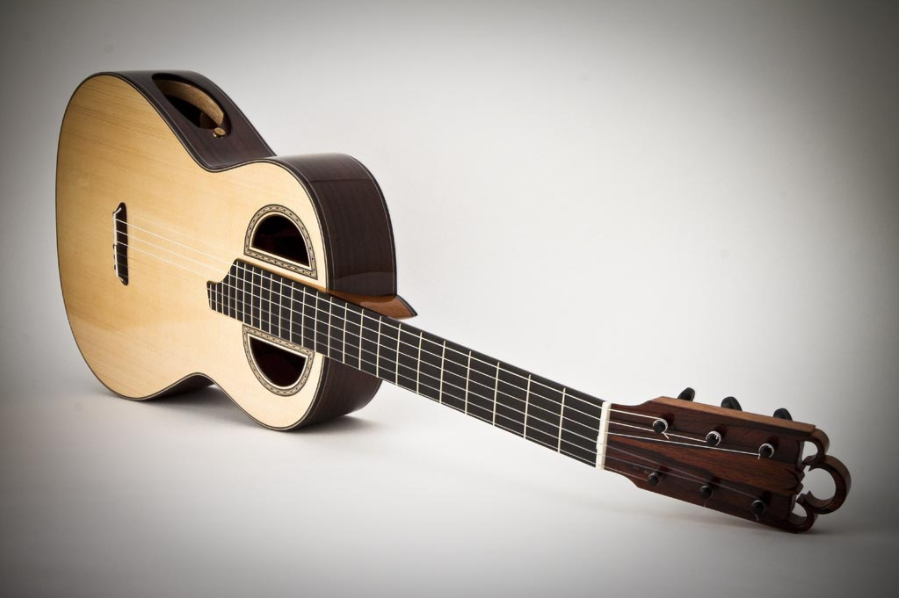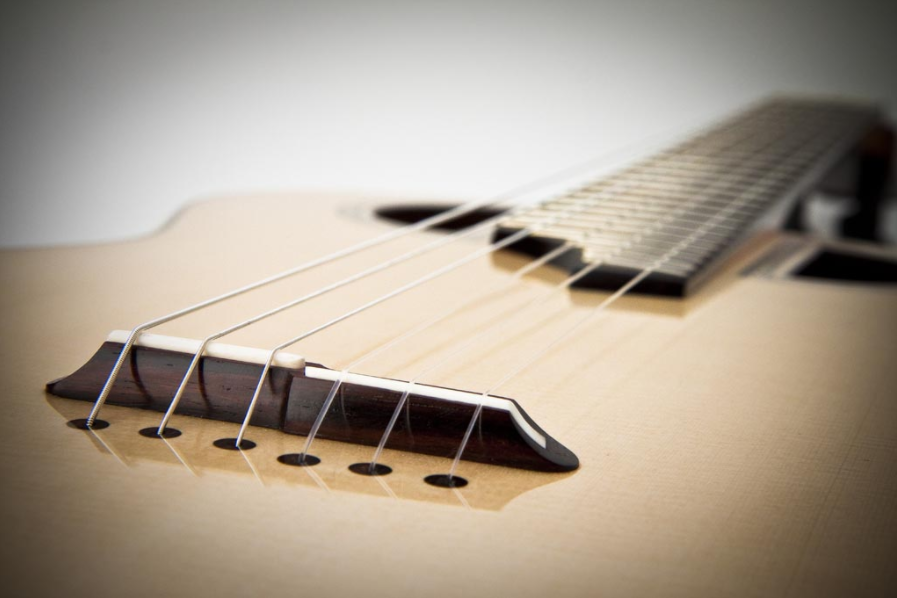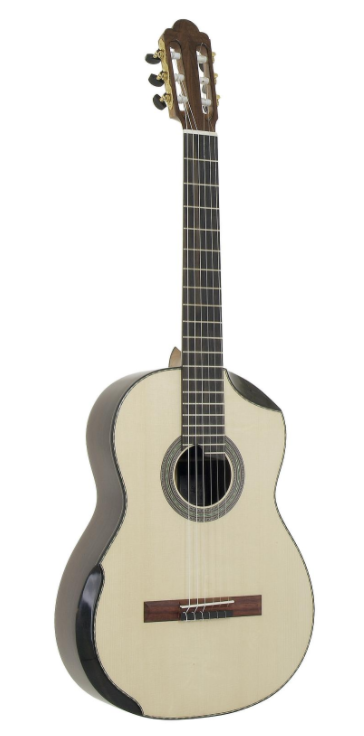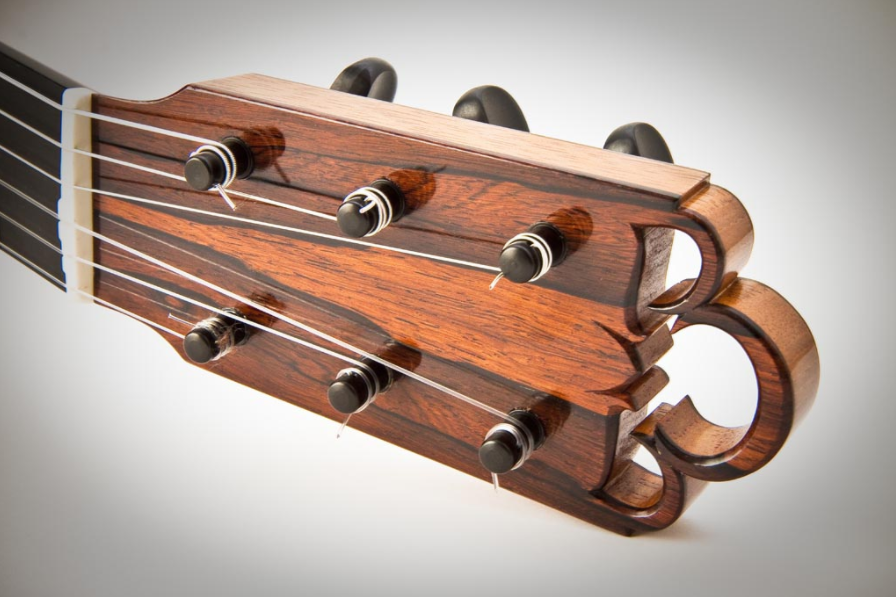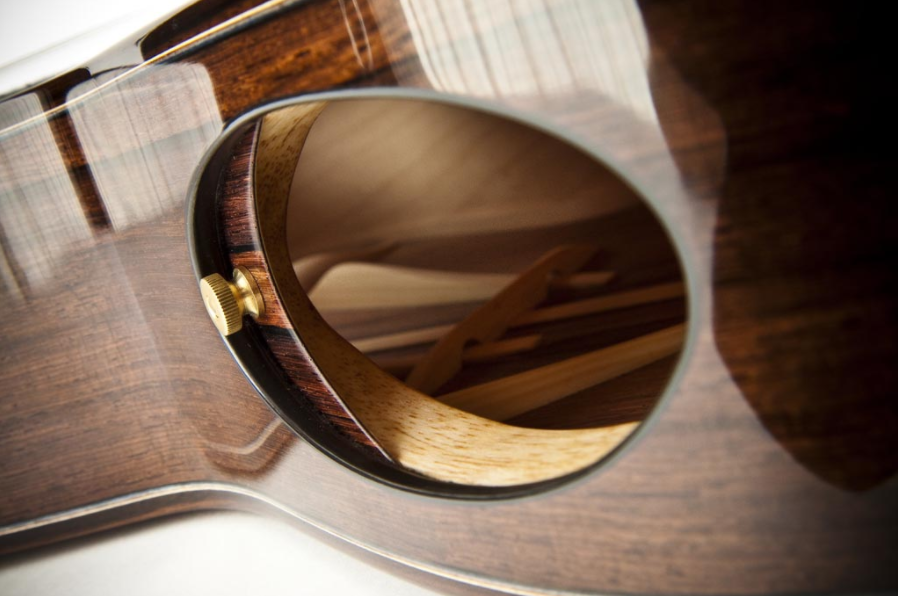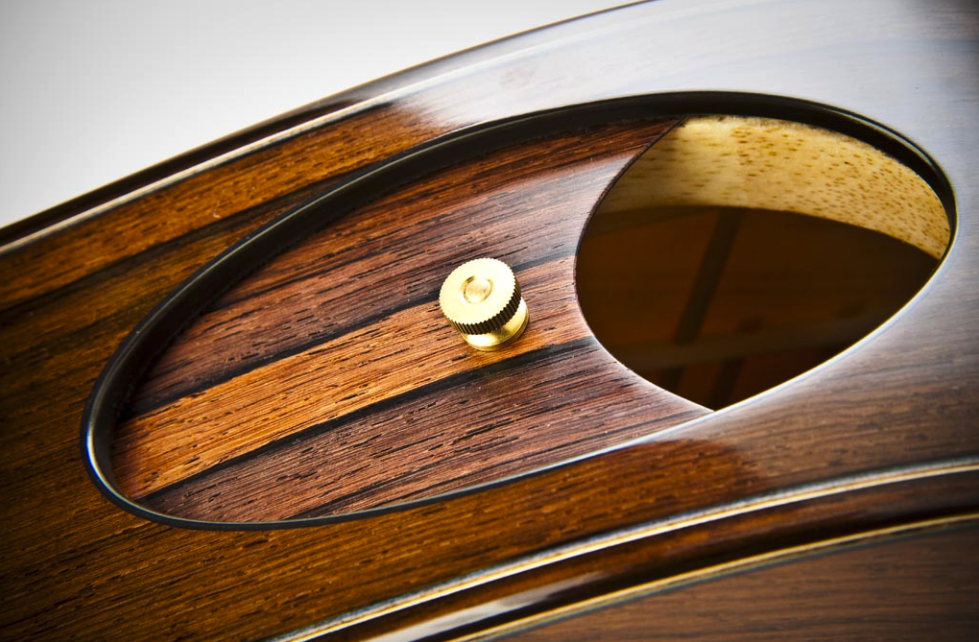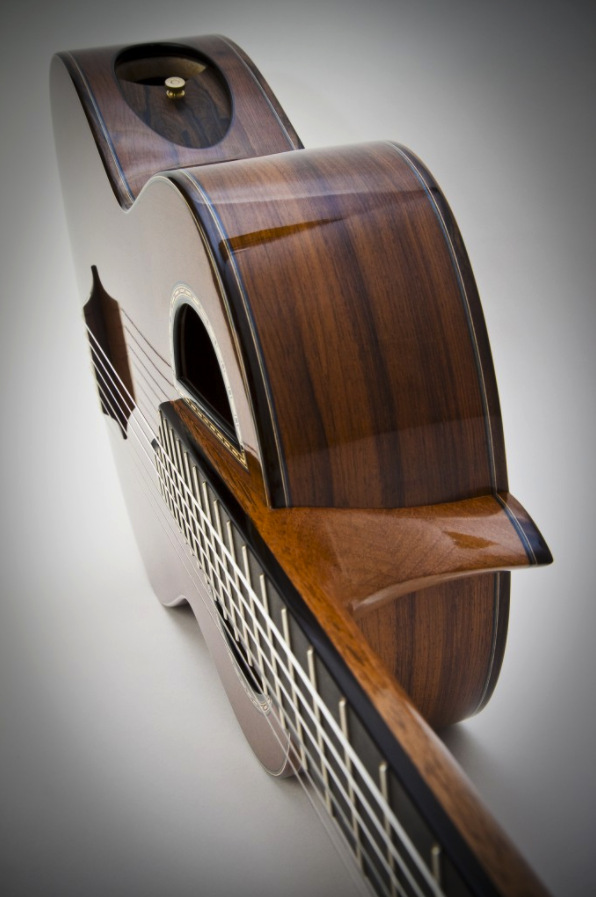Beautiful & Unusual Classical Guitars - Episode 1: Projection Guitar (Florian Vorreiter)
Florian Vorreiter is at the cutting edge of classical guitar design. Read on to discover more about his ideas & philosophy behind guitar construction.
Introduction
Every now and again we see a picture or watch a video and something within catches our eye & our imagination. A couple of months ago I was browsing through some Pinterest boards and I happened to see a picture of a classical guitar with a soundport that had a sliding door as part of its design. I was so intrigued that I immediately occupied myself with further research and discovered that the guitar was made by a German luthier called Florian Vorreiter.
It seemed that it was destiny for Vorreiter to become a luthier extraordinaire as his father restored museum instruments for several decades, and through his father's craft he was exposed to instrument repair, design, & construction going on to make & revolutionise not only classical guitar design but also acoustic guitars, lutes, & Baglama.
A love for art & music showed from an early age with Florian being an avid violinist and in later years an artist with a passion and penchant for air brushes, spray cans, and the humble pencil. These two passions have combined to create what I believe to be some of the most visually stunning classical guitars of the 21st century.
The picture above says it all about these guitars but I should take some time to show you some of the unique features of a Vorreiter guitar.
The 'Floating Bridge'
Ergonomics
Headstock
Soundport Ideas
To find out more about modern classical guitar designs and features be sure to check out my other blog articles here. To find out more about Florian Vorreiter's fabulous guitars and the man himself take the time to visit his website:
Florian Vorreiter
Modern Classical Guitar Design Part 3: Soundports
Soundports...enigmatic 'holes' near the heel of the neck that almost look like someone drilled a gigantic void into your guitar to see how it worked. Read this article for an insight into these mysterious 'guitar circles'.
Introduction
Traditionally guitars have had a single soundhole located at the front of the guitar to allow the sound to escape and be heard by the guitarist and the audience. There have been many variations on the shape, size, style, and placement of the soundhole with varying levels of success. In recent years however a movement amongst luthiers to place a soundport or sound portal on the upper and sometimes the lower bout of the guitar has gained momentum and acceptance into the classical guitar community.
Why?
Inevitably one must ask the question "Why would I want a classical guitar with a soundport?" The answer to this can be explained as follows:
- Personal monitoring. A soundport can act as a 'stage monitor' allowing you to hear your instrument with increased clarity. This is particularly important in ensemble playing where the guitar is usually easily lost in the mix.
- Ensemble monitoring. With a soundport more of the guitars' sound is being projected upwards and to the side thus giving the opportunity for your fellow performers to hear you more clearly.
- Brightness. A soundport can open up a dull sounding instrument. How this is achieved isn't exactly known but many owners that have added a soundport(s) to an instrument have remarked that their guitar sounds brighter with increased resonances and higher frequencies.
- Fine tuning. From a luthier's perspective a soundport can enable 'fine tuning' of the instrument whereby the a luthier can alter the size of the soundport to adjust the high frequency response attributable to the changing cavity resonance.
A few words from Luthiers...
- Kris Barnett on Soundports
- Fritz Mueller on Soundports
- Kenny Hill on Soundports
Soundport Variations
It seems that not all soundports are created equal - some are huge, some are perfectly round whereas others are an oval shape. To complicate matters further some can be partially or completely closed using magnetic systems or as you see in the first picture in this article others have a sliding design that will allow you to adjust the size of the soundport.
The image at the beginning of this article features a 'sliding soundport' by Florian Vorreiter. Rather uniquely that soundport is actually located at the lower bout of the guitar just below where your forearm rests on the guitar.
Check out this amazing photo build and article of a magnetic soundport cover system by Carlos Juan Busquiel.
The Verdict
All in all it does seem like a soundport or soundports are a wonderful innovation in the classical guitar realm. It seems that they should become a standard feature on classical guitars along with an elevated fretboard (seem my blog article on elevated fretboards here). The advantages of having one or two on your guitar are great.
Check out my other articles in the
'Modern Classical Guitar Design Series':
Part 8: Fanned Frets
Part 7: Arched back
Part 6: Double Tops
Part 5: Lattice Bracing
Part 4: Armrest
Part 2: Indented Cutaway
Part 1: Elevated Fingerboard


